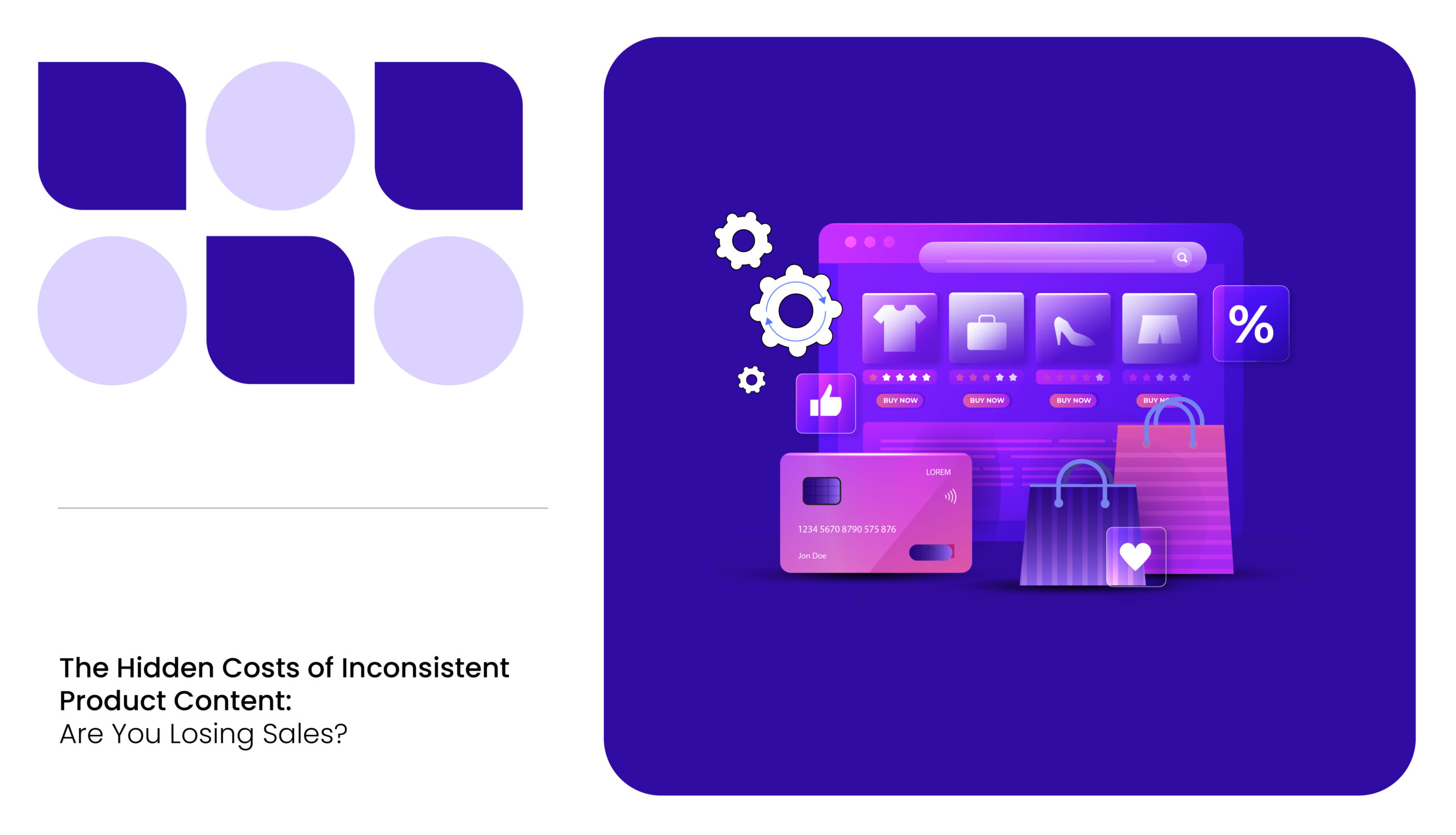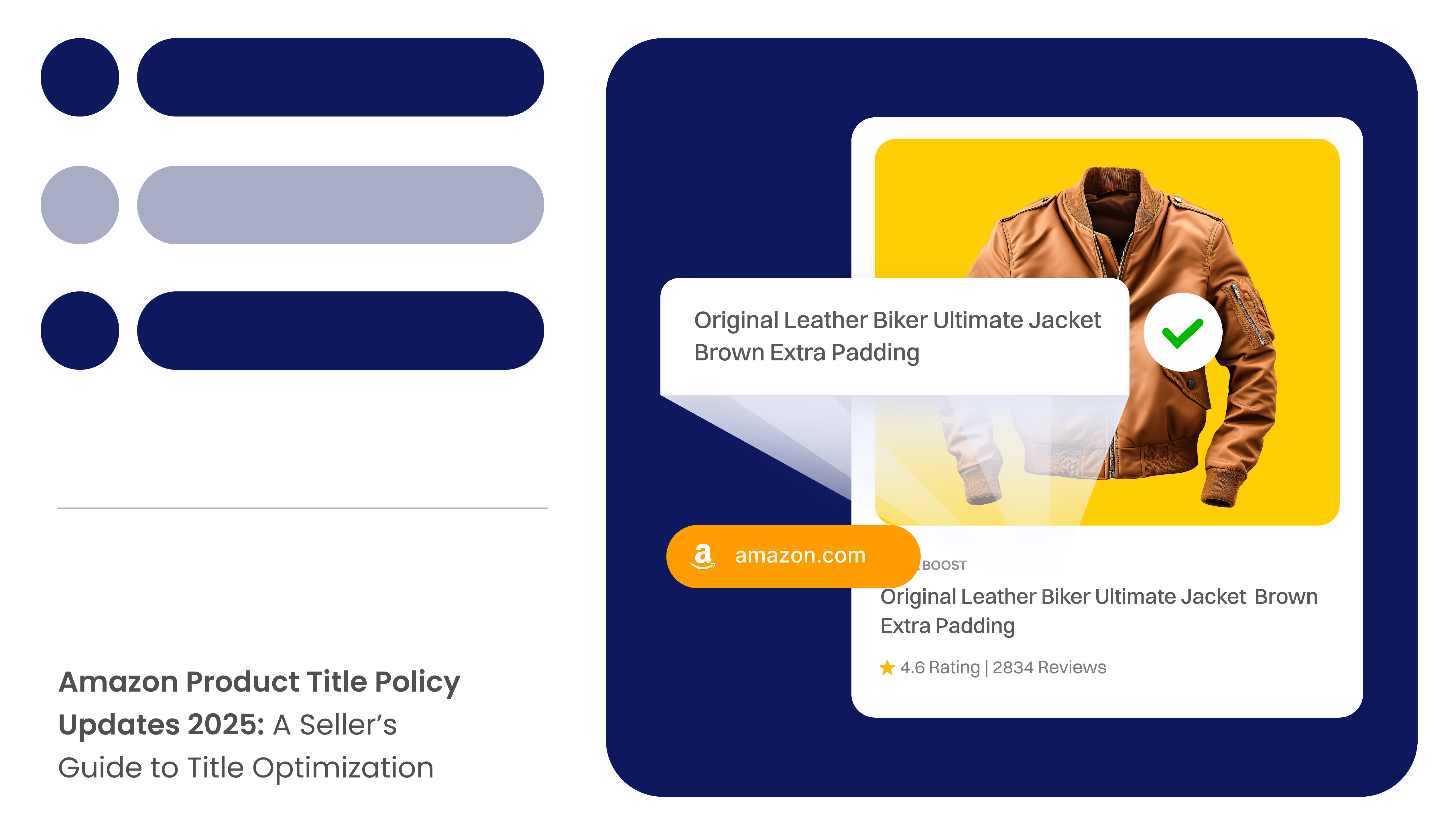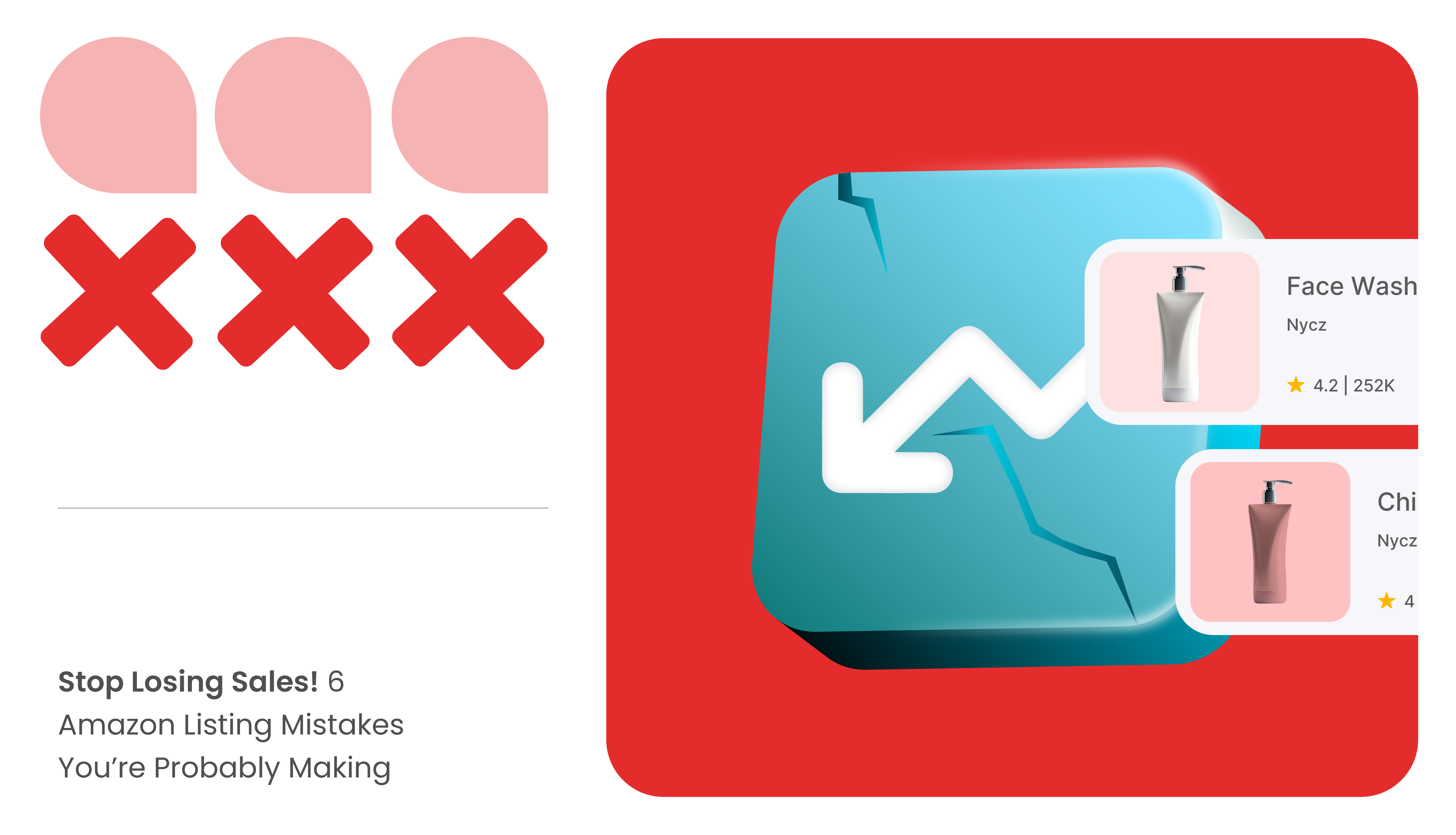Success on Amazon starts with ranking high- because that’s what drives sales. Here are some interesting statistics from Search Engine Journal that prove it:
- 70% of Amazon shoppers don’t venture past the first page of search results.
- 35% of Amazon shoppers click on the first product on a search page.
- The first three product listings displayed in Amazon SERPs account for 64% of clicks.
In short, the higher a product ranks on Amazon, the better its chance of being sold. To improve Amazon product ranking, brands need robust content compliance and optimization software.
How Does Amazon SEO Work?
Amazon’s search algorithm, A9, enables the e-commerce platform to find and rank relevant product listings for a specific search query. It considers several factors before ranking a product on Amazon. They include:
- Product listing quality
- Images
- Keywords
- Customer reviews
Moreover, organic ranking on Amazon not only saves brands the cost associated with Pay-Per-Click (PPC) campaigns but also provides long-term visibility and profitability.
However, unlike traditional SEO, which aims to deliver relevant content, Amazon SEO is designed to prioritize products that are most likely to convert into sales. In addition, the keywords on Amazon are product-focused, highlighting the features and benefits, thereby encouraging customers to purchase them.
Thus, optimizing product listings on Amazon isn’t just about visibility; it’s about driving conversions.
7 Effective Tips to Improve Amazon Product Ranking
Tip 1: Research and Identify High-Volume Keywords
Keyword research is the cornerstone of Amazon SEO. Therefore, brands need to choose relevant, high-search-volume keywords to ensure potential buyers can discover their products.
Start by identifying the primary keywords that best describe your product. Moreover, you can analyze the relevant competitor keywords and build a targeted keyword list. Once you have gathered the keywords, categorize them into primary, secondary, and long-tail keywords.
Primary keywords are the most competitive and should be included in the title and bullet points, while secondary and long-tail keywords can be placed in the backend search terms and product descriptions.
Pro Tip: Regularly update the keyword list based on e-commerce trends, seasonality, and changes in search behavior to stay ahead of the competition.
Tip 2: Optimize Your Title and Product Description
The product title is the first element both the algorithm and customers see. Thus, it needs to be compelling, informative, and keyword-rich.
A well-optimized title should include the brand name, the primary keyword, and key product attributes such as size, color, or quantity. For example, instead of “Stainless Steel Water Bottle,” opt for “Stanley Quencher H2.0 FlowState Stainless Steel Vacuum Insulated Tumbler with Lid and Straw for Water, Iced Tea or Coffee.”
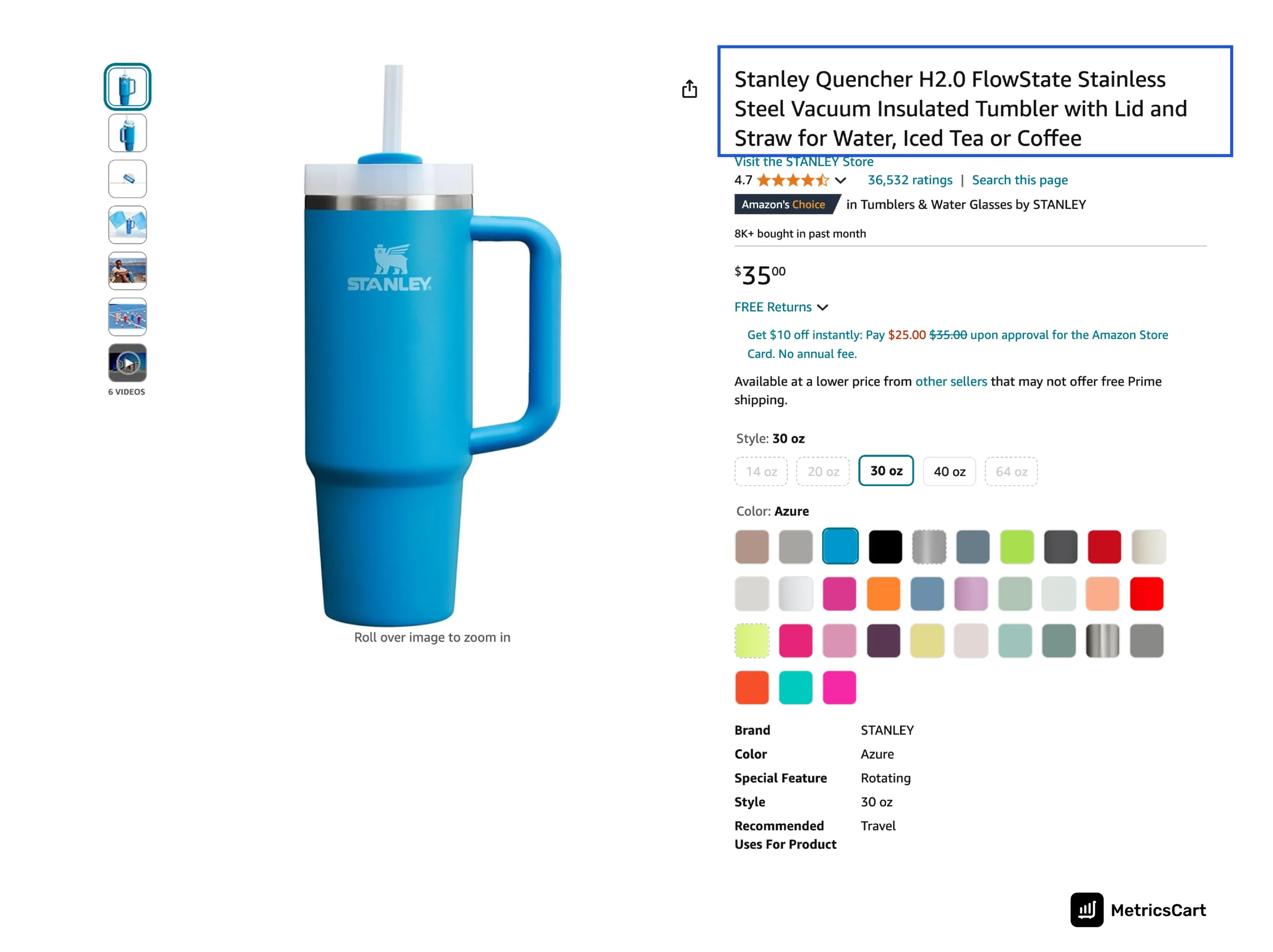
In addition to the title, product description and bullet points should be optimized with secondary keywords to highlight the features, benefits, and unique selling propositions (USPs). You can use bullet points to make the information easily readable and emphasize how the product meets customer needs.
Brands can also leverage content audit software to ensure that product content aligns with Amazon’s requirements and meets the content score.
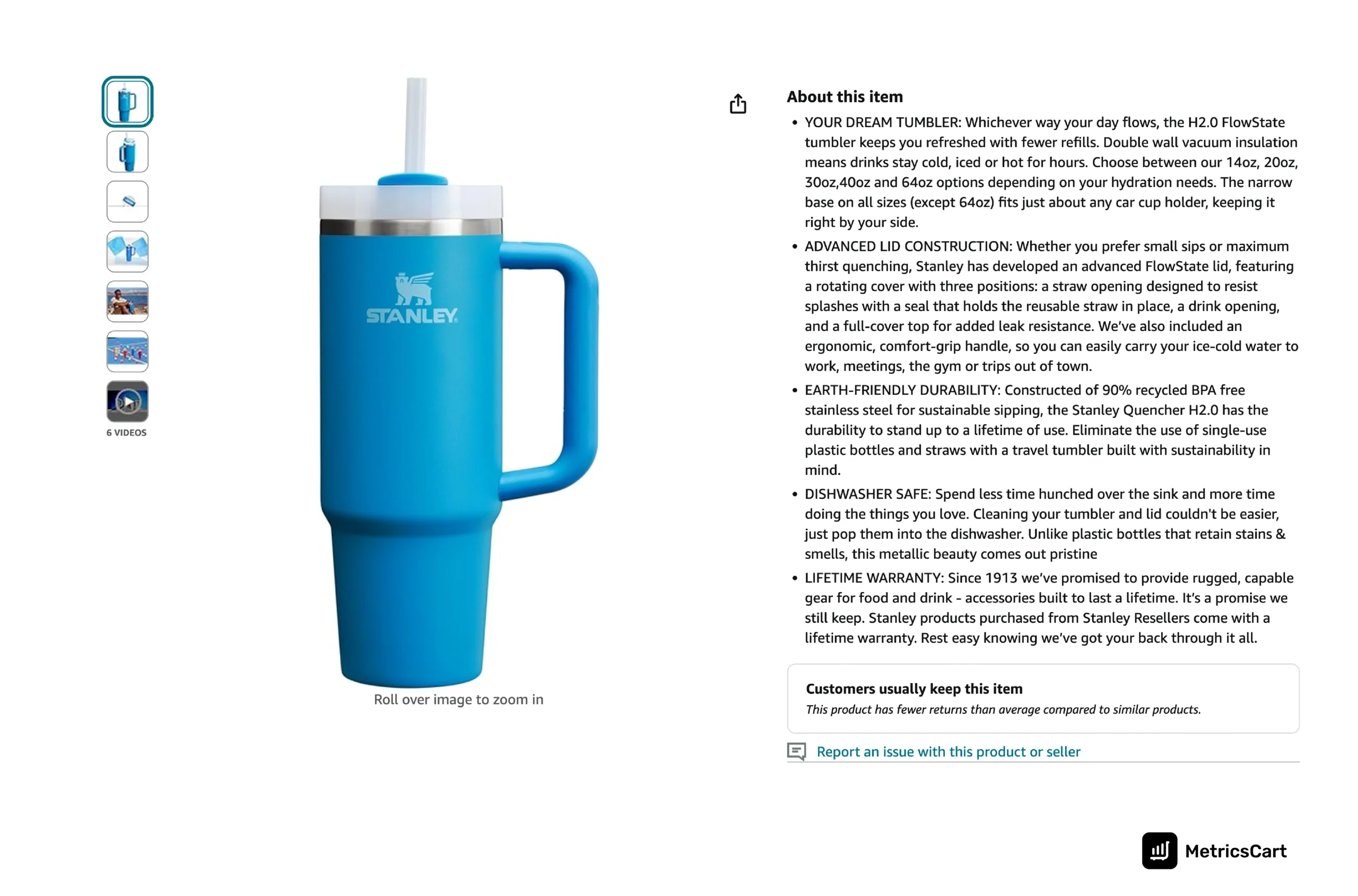
Pro Tip: Avoid keyword stuffing. Instead, focus on creating a natural and persuasive description that appeals to both the algorithm and potential buyers.
READ MORE | Still Confused About Optimizing Product Pages? Check out E-Commerce Product Page Optimization: Tips and Examples
Tip 3: Upload High-Quality Images and Videos
Since customers can’t physically interact with a product on Amazon, high-quality images help bridge that gap by providing a visual representation of what they can expect. Amazon allows up to nine images, including one main image, eight additional ones, and one product video. This will enable you to showcase the product from various angles and highlight key features.
Moreover, brands need to follow Amazon’s image and video guidelines for their products. Some of them are:
- Main images typically require a white background, a minimum resolution of 1000 x 1000 pixels
- Videos should be well-lit, in focus, and have clear audio. They should accurately represent the product and its features.
- Videos should be between 30 seconds and 15 minutes in duration.
- The product must fill at least 85% of the image.
- Images must not exceed 10,000px on the longest side.
- Images must be JPEG (.jpg or .jpeg), TIFF (.tif), PNG(.png), or GIF (.gif) file formats. JPEG is preferred.
- Images must not be blurry, pixelated, or have jagged edges.
In addition, you can add lifestyle images, infographics, and comparison charts to enhance the listing by showing how the product is used, its benefits, and how it stands out from competitors.
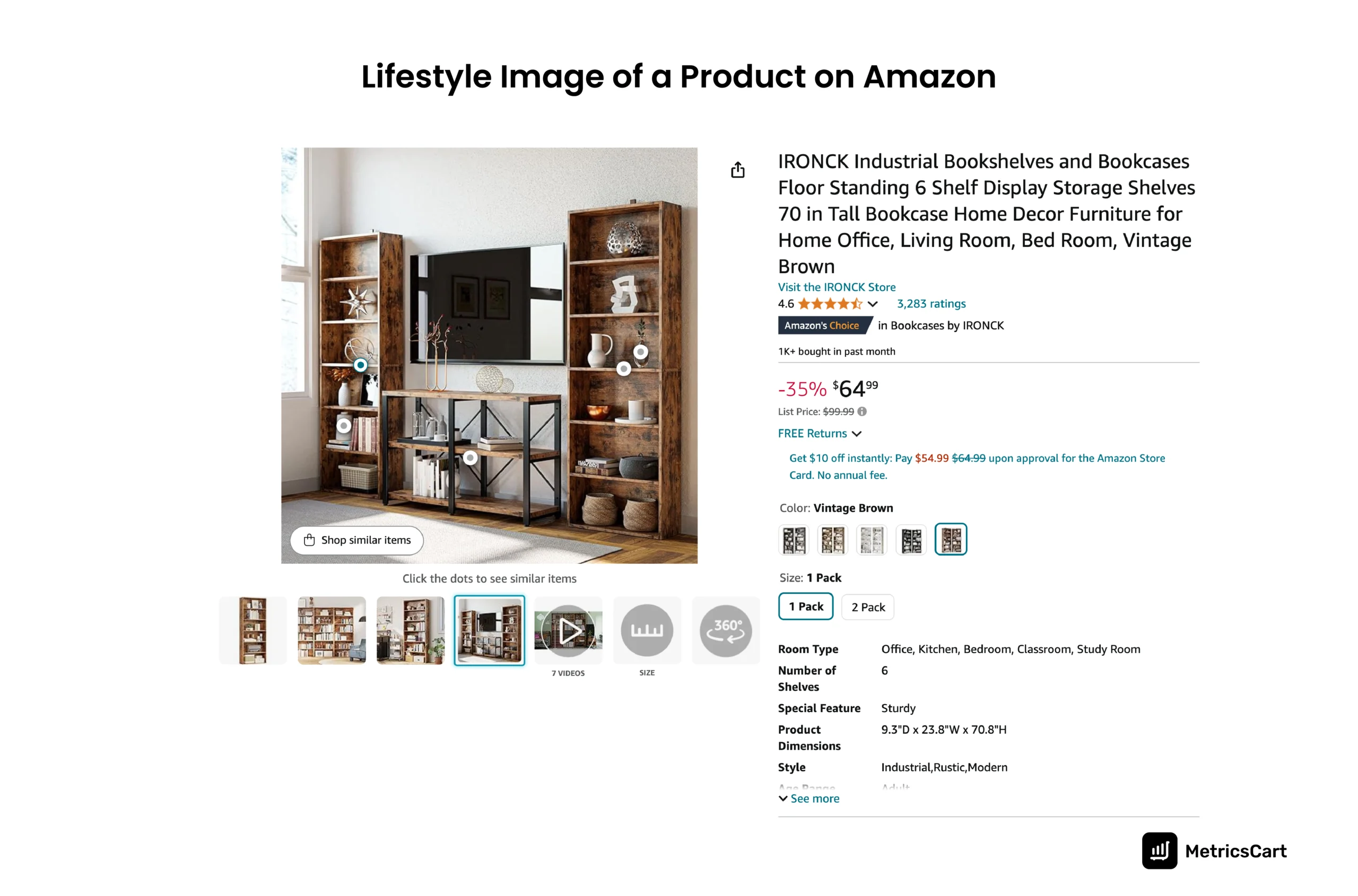
Pro Tip: Utilize Amazon’s A+ Content (formerly Enhanced Brand Content) to add more visual appeal and detailed information to the product page, improving customer engagement and conversion rates.
Tip 4: Leverage Customer Reviews
Customer reviews are a decisive factor in Amazon’s ranking algorithm and a key driver of purchasing decisions. Brands must aim to get more reviews on Amazon because products with more positive reviews tend to rank better and attract more buyers.
Brand managers can use a review monitoring tool to analyze ratings and feedback to understand customer sentiment regarding the product. The tool also allows you to identify the main phrases and keywords used by customers to describe the product. These phrases can be used in product descriptions to enhance SEO and rank better on Amazon.
Pro Tip: Incorporate customer-generated content, like images and videos, into reviews. When customers upload photos or videos showcasing the product, it not only enriches the review but also provides additional visual proof of the product’s quality and functionality.
READ MORE | Want to Learn How Reviews Can Boost E-Commerce SEO? Check out Climb Search Rankings: How can Product Reviews Help Boost SEO?
Tip 5: Use Amazon’s Parent-Child Feature
When customers browse your products, they want to see all their available options in one place. If you offer a product in multiple colors, sizes, or other variations, it’s essential to present these options within a single listing using Amazon’s parent-child feature.
This not only simplifies the shopping experience for your customers—making it easy for them to choose the best option—but also consolidates all reviews in one place. By gathering reviews across all variations, you boost the overall credibility of the product, which can positively impact your rankings and help retain potential buyers on the listing.
Pro Tip: When using the parent-child feature, ensure that each child variant has its own optimized set of keywords, bullet points, and images. This will maximize the visibility of each variation within the listing.
Tip 6: Offer Competitive Pricing and Promotions
Price is a critical factor in your product’s conversion rate and ranking on Amazon. The platform’s algorithm considers pricing when determining which products to feature prominently. To stay competitive, monitor your competitors’ prices regularly and adjust your Amazon pricing strategy accordingly.
In addition, brands can offer promotions, such as discounts, coupons, and limited-time offers, to boost the product’s visibility and sales velocity. Amazon’s algorithm favors products with higher sales momentum, which can improve the ranking, leading to even more sales.
Pro Tip: Consider using Amazon’s dynamic pricing to automatically adjust prices in response to market changes, ensuring brands remain competitive.
Tip 7: Track and Monitor Product Rank Consistently
Consistent tracking and monitoring of the product’s rank are essential to maintaining and improving position. It helps you identify areas for improvement and adjust the strategy accordingly.
Moreover, content compliance and optimization software can help brands ensure that the products have the right title, description, imagery, and product information. It will monitor the PDPs and identify content discrepancies, which can create a drop in rankings. This enables you to revisit their keywords and refresh their product images or descriptions.
Additionally, using the best seller report to track your brand and category-based Amazon bestsellers helps determine which new products to launch based on market demand. It also allows for competitive analysis by examining competitors who are best sellers within your category. This helps guide your optimization strategies to enhance your rankings.
Pro Tip: Set up alerts for significant changes in rankings or sales performance to address issues promptly and prevent further declines.
Conclusion
Ranking high on Amazon is essential for driving sales and achieving long-term success on the platform. As mentioned above, implementing these strategies can significantly improve brands’ product visibility and conversion rates.
Remember, Amazon SEO is an ongoing process. So, adapt to changes in the market and continue refining your strategies using digital shelf analytics to stay ahead of the competition.
Want to remain on top of Amazon search results? Contact us and partner with MetricsCart today.





